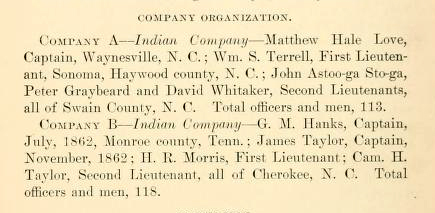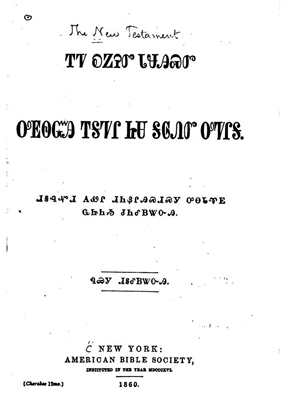d. 15 Sept. 1862

John Astooga Stoga, popular Cherokee leader from that part of Jackson County in south-western North Carolina that became Swain County in 1871, was the grandson of Junaluska. His name was said to mean "standing in the doorway," suggesting that he was regarded as a door or shelter. The name also has appeared as Astoogatogeh and without the given name, John. As a Christian, Stoga was instrumental in persuading the American Bible Society to translate the New Testament into the Cherokee language. It was published in 1857.

On 9 April 1862 he was commissioned second lieutenant in Company A of Captain William H. Thomas's legion of Cherokee troops, the Sixty-ninth Regiment of North Carolina Troops (also designated as the Seventh Regiment of Cavalry). In the late summer of 1862 several companies of the regiment were ordered to Powell's Valley between Jacksboro and Cumberland Gap in East Tennessee, where Federal activity threatened to cut Confederate lines of communication. At Baptist Gap, Lieutenant Stoga, described as "a splendid specimen of Indian manhood and warrior," led his men in an attack on a Federal position, but he was fatally shot. A contemporary reported that the lieutenant's men were "furious at his death and before they could be restrained, they scalped several of the Federal wounded and dead." The arrival of reinforcements, however, brought victory for the Cherokee warriors.